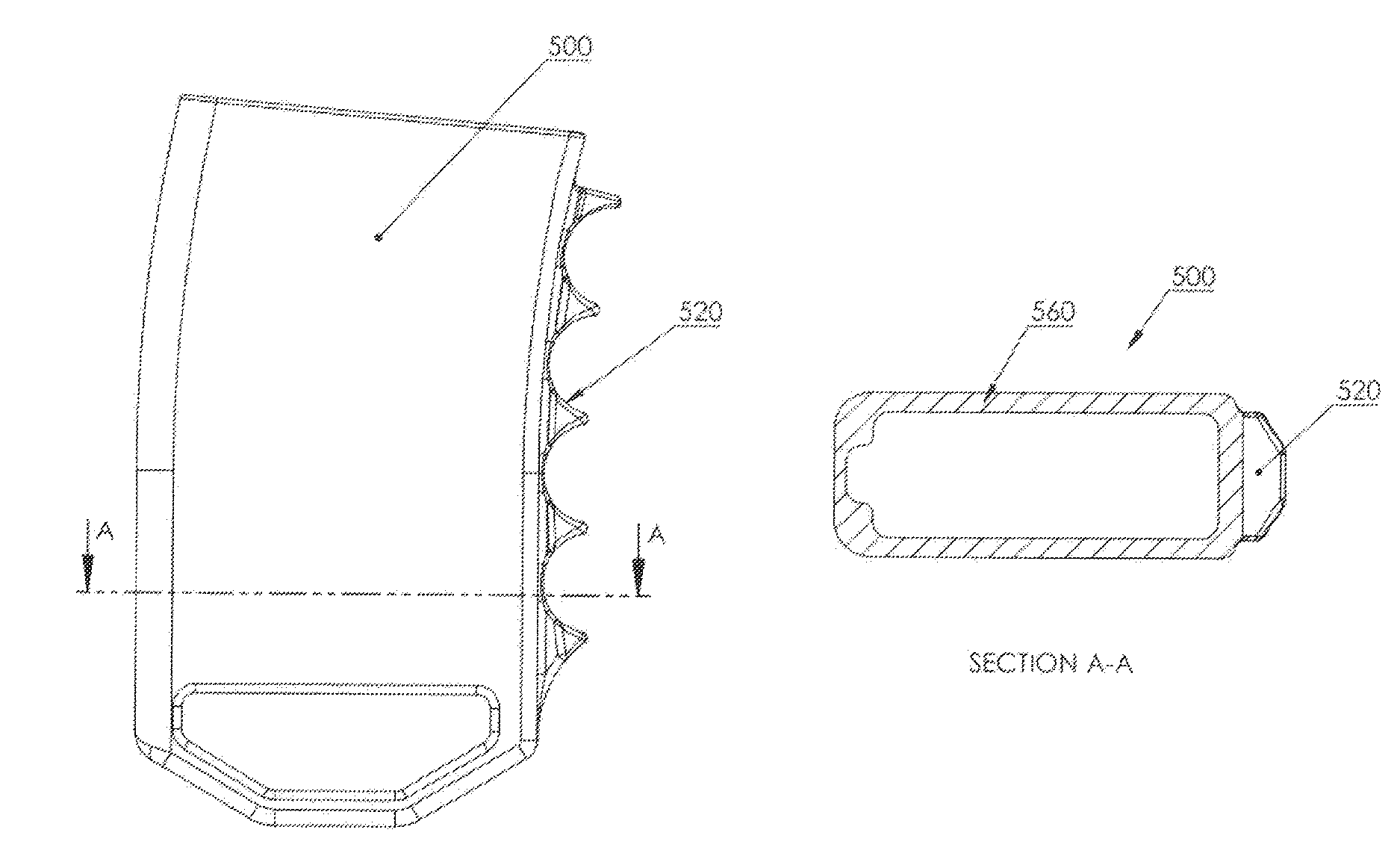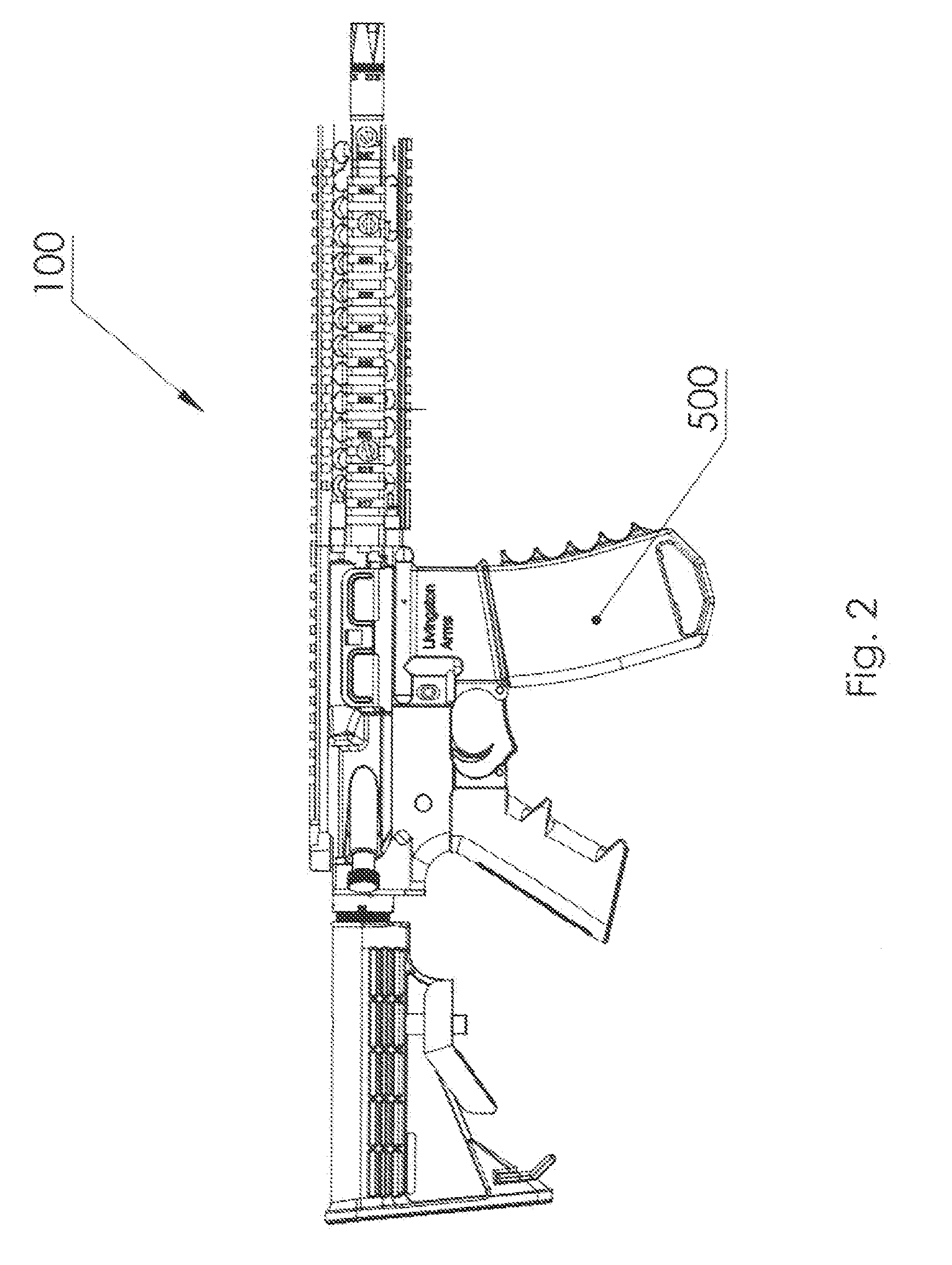Magazine Carrier
a magazine carrier and magazine technology, applied in the field of magazine carriers, can solve the problems of being too early to be detected by a target before the room is breached, and reducing the operator's ability to surprise, shock and secure the subj
- Summary
- Abstract
- Description
- Claims
- Application Information
AI Technical Summary
Benefits of technology
Problems solved by technology
Method used
Image
Examples
Embodiment Construction
[0019]Referring now to the drawings and in particular FIG. 1, an example of a modern rifle that would be suitable for use with the magazine carrier of the present invention is generally designated by reference numeral 100. The example rifle shown in FIG. 1 is a version of the AR-15 rifle and is widely used by the United States armed forces. It should be obvious to one skilled in the art of magazine carriers that the present invention may also be used to fit magazines that carry other calibers of ammunition. The intended use of the magazine carrier of the present invention is to not only carry an actual ammunition magazine but is also further intended to be kept connected to the magazine itself during subsequent loading of the magazine into the rifle.
[0020]Referring next to FIGS. 2 and 3, the intended use of the magazine carrier of the present invention is shown with the magazine carrier 500 securely attached to the magazine 150 of rifle 100. For orientation purposes, magazine 150 is...
PUM
 Login to View More
Login to View More Abstract
Description
Claims
Application Information
 Login to View More
Login to View More - R&D
- Intellectual Property
- Life Sciences
- Materials
- Tech Scout
- Unparalleled Data Quality
- Higher Quality Content
- 60% Fewer Hallucinations
Browse by: Latest US Patents, China's latest patents, Technical Efficacy Thesaurus, Application Domain, Technology Topic, Popular Technical Reports.
© 2025 PatSnap. All rights reserved.Legal|Privacy policy|Modern Slavery Act Transparency Statement|Sitemap|About US| Contact US: help@patsnap.com



